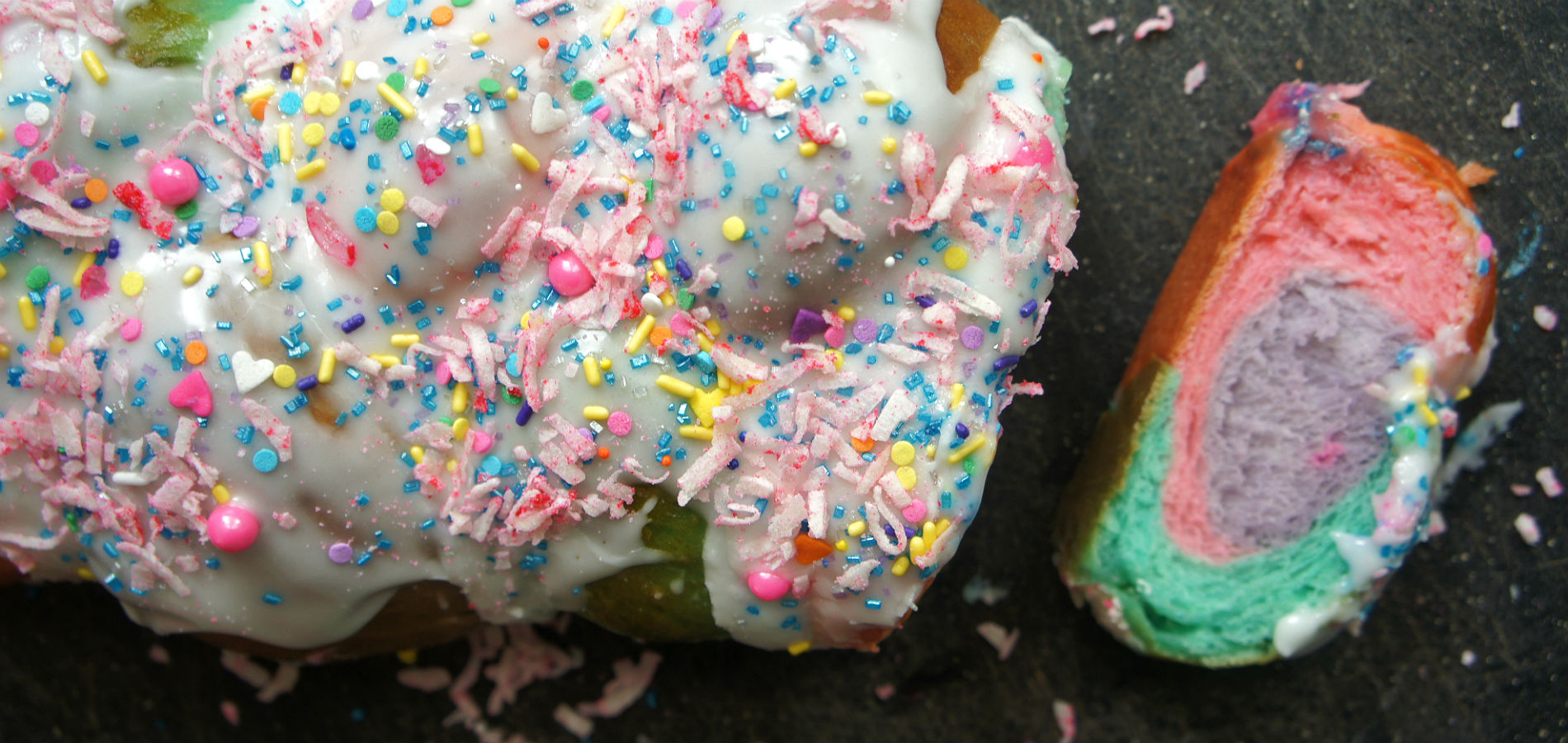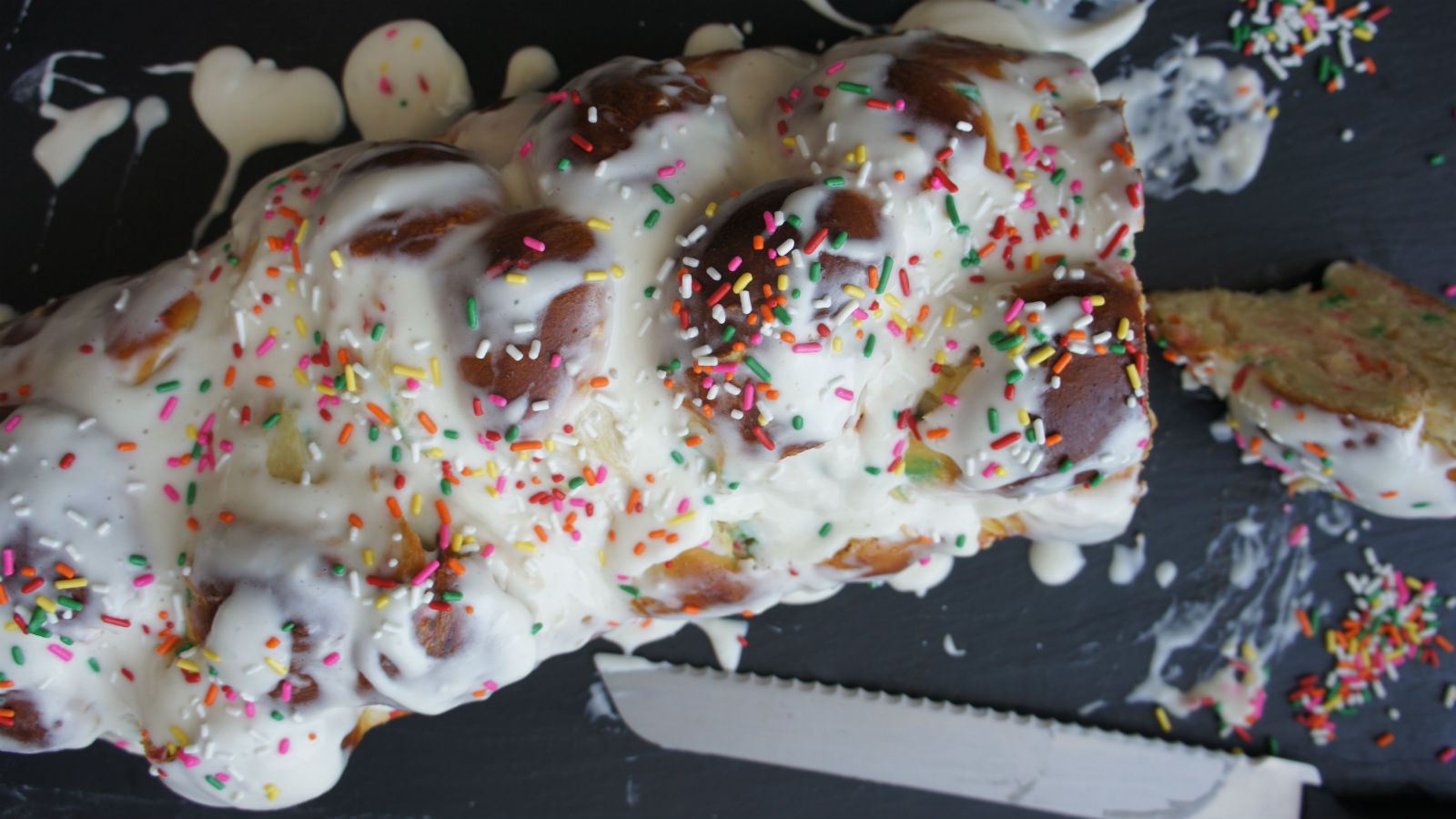Challah is my weakness. I regularly polish off an entire loaf, snuggled in bed on a Saturday morning. I love every kind — sprinkled with poppy seeds, streusel-topped, even whole wheat. But nothing beats a Purim challah.
They’re common in Jewish bakeries around the U.K., popping up a week or so before the holiday. More cake than challah, they’re sweet with raisins and cinnamon, and sticky with a honey glaze or white frosting, brightening up the bakery with their adornment of colored sprinkles. They’re intended to be eaten at the traditional Purim meal, which takes place during daylight hours, inspired by Esther and Mordechai’s proclamation that Purim was to be a time of feasting and merrymaking. I, of course, always buy a couple of back-ups, to enjoy in private.
https://www.instagram.com/p/B5LiqAhgmJk/
This colorful, sweet challah seems like a natural companion to the costumes, alcohol, and general merriment of Purim. But when my colleagues in the U.S. told me they’d never heard of the tradition, I decided to dig into its history.
The Nosher celebrates the traditions and recipes that have brought Jews together for centuries. Donate today to keep The Nosher's stories and recipes accessible to all.
I discovered that Purim challah has roots in Russian Jewish communities, where it was called “kulich” or “keylitsch.” Like the ones sold in the U.K., kulich’s dough was sweet and often filled with raisins. The loaf was typically long, oversized, and extensively braided — the braids symbolized the ropes that Haman intended to hang Mordechai with, but were ultimately used to hang Haman at the end of the Megillah, instead.
Interestingly, there’s another bread called kulich that’s eaten in Russia to this very day. This bread is associated with Easter, which, depending on the year, doesn’t fall too far away from Purim; it makes sense that Jewish communities would be influenced by their Christian neighbor’s traditions. The Easter kulich, however, has a different shape: cylindrical — more similar to an Italian panettone than challah. But it, too, has a sweet dough incorporating dried fruit and is flavored with warm spices and a frosted top.
To make your own kulich, add a couple of handfuls of raisins, dried fruit, and/or citrus peel to your regular sweet challah dough. For a modern twist, opt for chocolate chips. To elevate your challah, why not try your hand at some new braiding techniques? Once cooled, top with an easy powdered sugar frosting (1 cup powdered sugar to 4-5 tablespoons milk or water) and sprinkles.

Or, harness the festivity of Purim and have fun with your challah! Embrace color with this unicorn challah, get glittery with this New Orleans-inspired loaf, or experiment with flavor combinations with these chocolate-cranberry challah rolls with citrus sugar.



